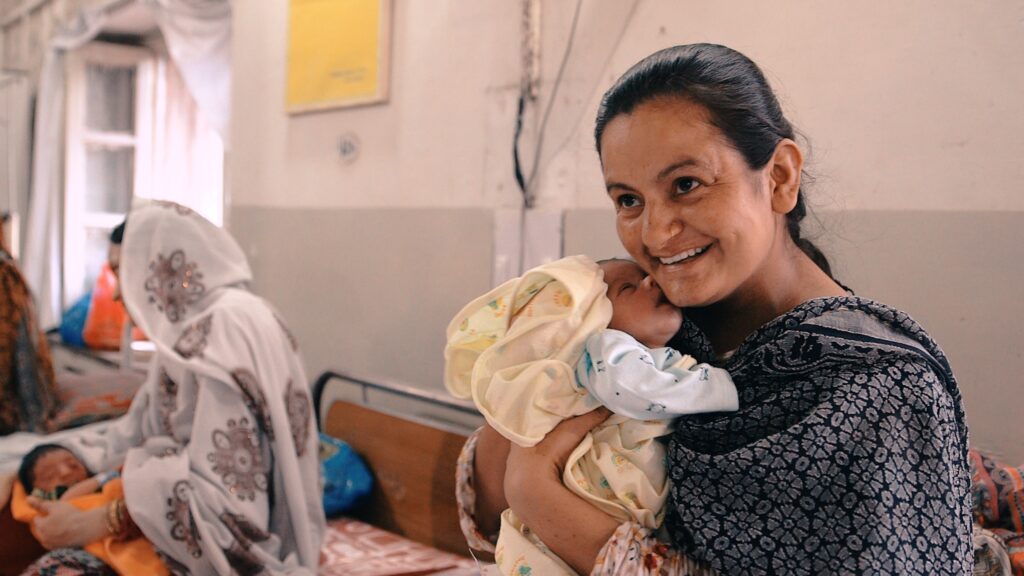This article was written by the WOMAN Trials team.
A year ago today, the WHO released its first roadmap to combat deaths from postpartum haemorrhage (PPH) – a condition which affects millions of women every year around the world and kills tens of thousands.
The roadmap seeks to fast-track progress towards SDG target 3.1 – which sets out to reduce the global maternal mortality ratio to less than 70 per 100,000 live births by 2030. Currently, we are a long way off meeting this target and, up until now, maternal mortality has remained stubbornly high, something we are trying to address through our work on the WOMAN Trials.

We will shortly be publishing two papers with significant new evidence and data on the role of anaemia and tranexamic acid (TXA), which will progress our knowledge in this area and hopefully have a positive impact for women. Although the roadmap in its current form overlooks the role of anaemia in postpartum haemorrhage and maternal mortality, our data show unequivocally that it is a critical risk factor for PPH – and more importantly for life threatening bleeding and death.
TXA is a life-saving treatment
Our work in this area started with the WOMAN Trial, the results of which we published in 2017. The trial showed that TXA is a lifesaving treatment for severe bleeding after birth. The WOMAN-2 Trial – results of which will be published very soon – was done to find out whether giving TXA just after birth could prevent severe bleeding in women with moderate or severe anaemia.
We will simultaneously be publishing an individual patient data (IPD) meta-analysis on the effects of TXA in women giving birth. This paper looked at data from 54,404 women across five large high-quality trials and reveals some interesting insights into the impact of TXA on life-threatening bleeding.
The roadmap outlines goals and activities for research, implementation and advocacy between 2023 and 2030. It aims to help countries address stark differences in survival outcomes from PPH, as over 80% of deaths from PPH happen in sub-Saharan Africa and South Asia. Also highlighted in the roadmap is the importance of the research question which the I’M WOMAN Trial is seeking to answer. Recruitment for this trial is well underway, with over 3,000 participants so far across sites in Nigeria, Tanzania and Pakistan.
The I’M WOMAN Trial will evaluate the effects of TXA just before birth for PPH prevention in women with one or more risk factors for PPH. The trial will also evaluate the effect of the route of TXA administration. TXA is usually given by slow intravenous (IV) injection, but recent research shows that TXA is well tolerated and rapidly absorbed after intramuscular (IM) injection.
If TXA could be given intramuscularly, women giving birth outside of hospitals would have access to this lifesaving drug and a higher number of healthcare workers would be able to treat women faster, as IM injections require less training than IV administration. This is crucial when a woman can bleed to death in a matter of minutes, meaning it could make a huge difference to maternal deaths.
Anaemia prevention and treatment is crucial
Now we understand more about the significance of anaemia and its links to poor outcomes for women and their babies, we are carrying out the WOMAN-3 Trial, which will principally look at the effect of giving TXA during menstruation for the treatment of anaemia.
Our view is that treating and/or preventing bleeding after childbirth is not sufficient to reduce maternal deaths. We need to work towards preventing and treating anaemia in all women as a starting point to ensure they are in better health before they conceive and deliver children.
Although iron and multivitamin replacement is the cornerstone of anaemia treatment, in young women, iron stores depend more on menstrual iron loss than on dietary intake. Because anaemia worsens bleeding, anaemic women will on average have heavier periods than if they were not anaemic. For this reason, offering iron replacement without reducing menstrual iron loss may be much less effective.
Once our results are published, the next piece of the puzzle will be available. We will take another step forwards in our understanding of why mothers die after birth and towards the next stage of our research. Next year, we look forward to widely disseminating our research insights and to using this evidence to refine strategies to reduce maternal deaths.
Sign up to our newsletter and stay updated on the WOMAN-2 Trial results